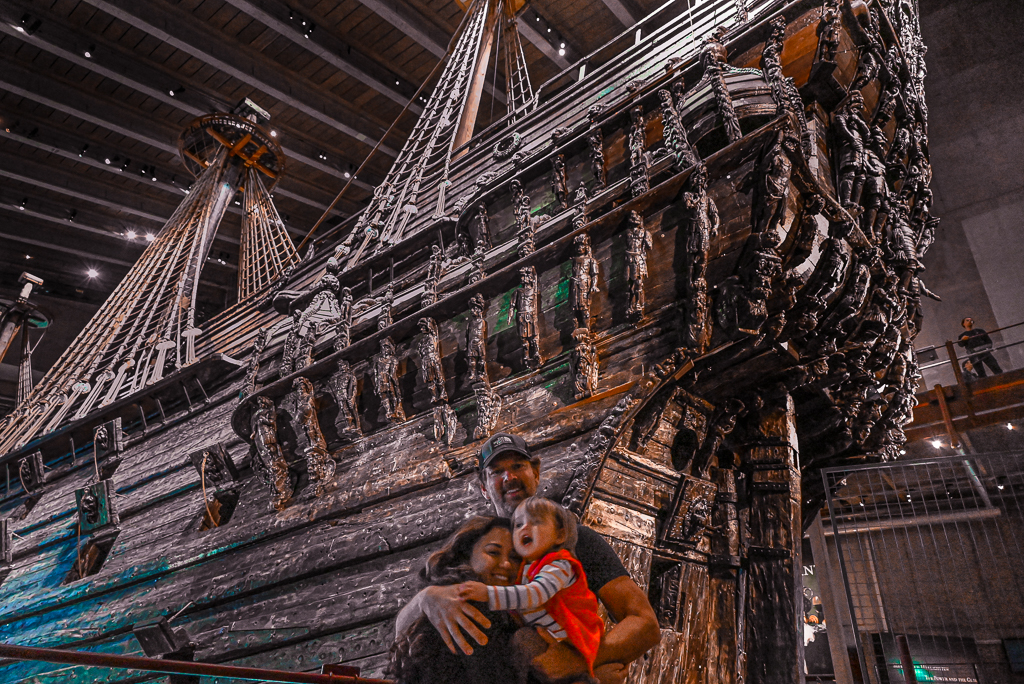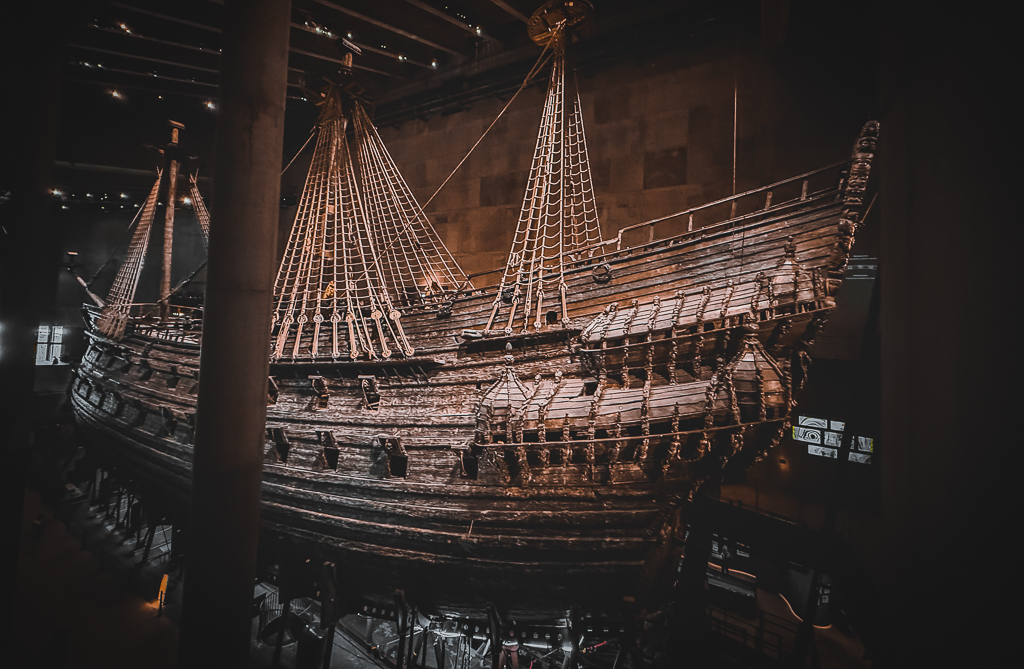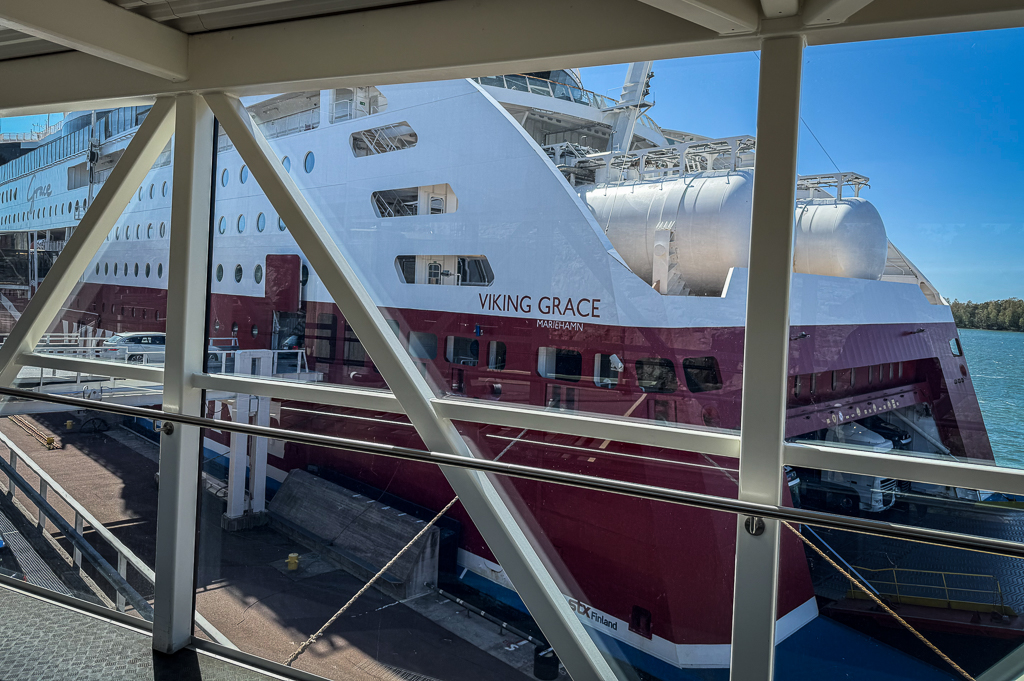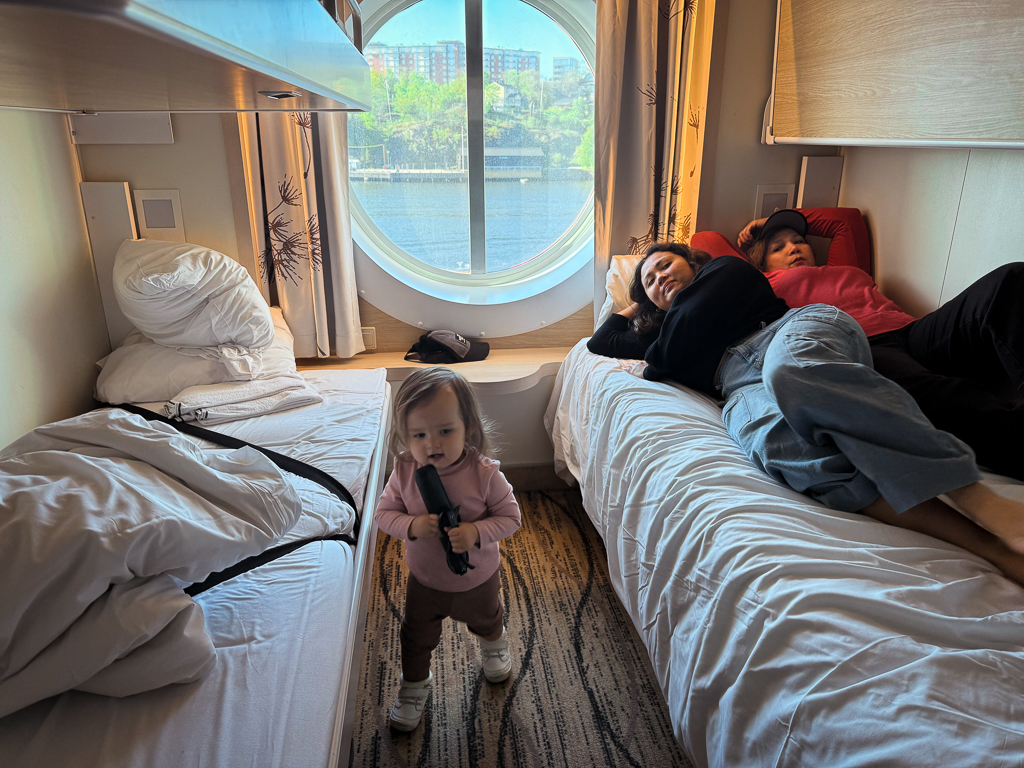May 2025: One of the Most Beautiful Ships Ever Built
Vasa Ship Museum, Stockholm, Sweden
A World of Man-Made Wonders
Over the years, I’ve stood before countless marvels of human engineering:
-
Angkor Wat, Cambodia
-
Egypt’s towering pyramids
-
Peru’s mystical Machu Picchu
These structures share a common trait:
They all demanded unimaginable manpower, resources, and a seemingly supernatural level of craftsmanship.
A Wooden Giant from the 1600s
Before arriving in Stockholm, I had heard of the legendary 400-year-old wooden warship—the Vasa. I knew it was incredibly well-preserved, but I wasn’t ready for what I saw.
As I stepped into the dimly lit museum and saw the ship rise before me, I was stunned.
The Vasa wasn’t just preserved—it was monumental.
Every inch of the ship was masterfully crafted, from the sculpted stern figures to the gun decks bristling with cannon ports.
Even after visiting wonders on every continent, I can confidently say:
The Vasa ranks among the most astonishing man-made structures I’ve ever seen.
Exploring Stockholm as a Family
To see the Vasa—and the rest of Stockholm—my family and I flew to Sweden for a multi-day adventure. It was part of a larger Scandinavian trip that also included:
-
The serene Åland Islands, nestled between Sweden and Finland
-
A scenic journey into Northern Norway
-
Wildlife viewing safari in northern Finland

Location of Stockholm, Sweden
A Long Journey to Sweden
Flying with a Toddler, Delays at LAX, and a Midnight Arrival in Stockholm
Indie’s Third Flight to Europe—But a Whole New Challenge
This trip to Sweden marked a small milestone for our daughter, Indie. At just 21 months old, this was already her third flight to Europe.
But unlike previous trips, this one came with a new dynamic:
Indie can walk now—and she doesn’t stop.
Once she became mobile, she turned into a tiny, unstoppable force of nature, full of energy, curiosity, and zero interest in sitting still.
The Flight Over: Surprisingly Smooth
We braced ourselves for the worst—11 hours on a plane with a toddler. But to our surprise, the overnight flight worked in our favor.
-
Indie fell asleep early in the flight
-
She stayed asleep for most of the journey
-
We even managed to catch a little rest ourselves
It was as smooth as long-haul flights with a toddler can get.
Trouble at LAX: A Homeland Security Delay
Things took a turn before we even left the ground. While sitting on the tarmac at LAX, the plane suddenly turned back to the gate.
The reason?
A Homeland Security team boarded and removed a passenger from the flight.
It was an unnerving and unexpected delay that added over an hour to our departure time—just enough to throw off our entire schedule.
Missed Connection, Midnight Arrival
That delay meant we missed our connecting flight to Stockholm from Frankfurt, which had been timed perfectly to:
-
Arrive in the early evening
-
Get dinner
-
Explore the city a bit before settling in
Instead, we were rebooked on a later flight and landed in Stockholm around midnight—in the cold, tired, and with nothing to do but try to get some sleep.
The Calm Before the Storm
Although the journey didn’t go quite as planned, we made it—and Indie had handled the outbound trip better than we imagined.
The real test?
The return flight two weeks later.
(But that’s a story for another post.)

Basement Vault in our hotel, Hotell Skeppsbron
Staying in the Heart of Stockholm’s Old Town
Hotell Skeppsbron | Gamla Stan
We stayed at Hotell Skeppsbron, a historic building dating back to the 1600s, tucked along the waterfront in Gamla Stan, Stockholm’s Old Town. Just steps from the Swedish Royal Palace, the location was ideal for immersing ourselves in the city’s rich past.
One of the hotel’s most charming features is its original stone-vaulted rooms in the basement—a quiet testament to the building’s age and character. However, they felt a bit claustrophobic, so I opted for one of the modern rooms with a window.
Pros
-
Perfect location – Just steps from the ferry terminal to the Åland Islands
-
Walkable to everything – Cobbled streets, cozy cafés, and royal landmarks were all within easy reach
-
Immersive atmosphere – Staying in the heart of a centuries-old district made the city’s history come alive
Cons
-
The interior was basic considering the price
-
Like many Scandinavian hotels, the room was uncomfortably hot, requiring open windows to cool it down
-
The old plumbing clanked loudly whenever anyone flushed a toilet—no matter where in the building
-
At 3:00 a.m., the northern twilight poured bright sunlight into the room; it never really got dark
A Rough Arrival
We arrived late at night, exhausted after a long, overpriced taxi ride from the airport, overloaded with luggage and a baby in tow. After loudly clattering our suitcases down the hallway, we accidentally tried to open the wrong room door—waking a shirtless elderly man, to everyone’s dismay.
Eventually, we located our room and collapsed into bed, only to be greeted by stifling heat, noisy plumbing, and blinding morning light just a few hours later.
A 4 a.m. City Walk
Still, as I often do when visiting a new city, I couldn’t resist the pull of early exploration. At 4:00 a.m., I quietly slipped outside and wandered through the empty alleys of Gamla Stan. The streets were hushed and peaceful, bathed in the strange, silvery glow of the Arctic dawn—a surreal and beautiful way to begin our time in Stockholm.

Walking the old city of Stockholm-Gamla Stan
Stortorget: The Blood-Soaked Heart of Gamla Stan
Arguably the most fascinating—and haunting—place in Gamla Stan is Stortorget, the old town’s main square.
It was here in 1520 that Danish King Christian II ordered the execution by beheading of over 80 Swedish nobles, clergy, and royals in what became known as the Stockholm Bloodbath.
The square ran red with blood as the cobblestones were saturated by the massacre—an event that shocked the nation.
The brutal betrayal ignited widespread outrage. Within just a few years, the Swedish people rose in rebellion, leading to:
-
The overthrow of Danish rule
-
The rise of Gustav Vasa as King—considered the founder of modern Sweden and the king for whom the doomed Vasa warship would later be named
-
The birth of an independent Swedish Empire
Today, the charming square—surrounded by red and ochre buildings and filled with cafes—stands in sharp contrast to the dark history it holds beneath its stones.

Stortorget, the old town’s main square, where the massacre of the 1520’s took place

Walking the old city of Stockholm-Gamla Stan

Walking the old city of Stockholm-Gamla Stan

King’s Palace-Gamla Stan
A Ferry Ride to Stockholm’s Museum Island
Exploring Djurgården
Later in the morning, we boarded a ferry just steps from our hotel along the Gamla Stan waterfront and set off toward the island of Djurgården—often called Museum Island. Once a royal hunting ground, Djurgården has retained much of its natural beauty, with lush green spaces and quiet forested areas despite being in the heart of Stockholm.
Today, the island is a cultural treasure trove, home to several of Sweden’s most popular museums and historic buildings.
Museums We Visited:
-
The Vasa Museum – The highlight of our visit, dedicated to the famously doomed 17th-century warship
-
The ABBA Museum – A fun and colorful tribute to Sweden’s iconic 1970s pop group, complete with interactive exhibits
The ferry ride itself was short but scenic, filled with fresh sea air and views of Stockholm’s waterfront architecture. Most of the passengers were Swedish mothers with strollers, enjoying a morning outing in the sun.
We spent the rest of the day wandering the waterfront promenades, ducking into museums, and soaking up the unexpectedly beautiful, sunny weather—a rare treat in Stockholm that made the whole experience even more memorable.

Historical ferry we took

Indie, Paula and her mom

View of Gamla Stan from our ferry
Vasa: The Pride and Fall of a Swedish Warship
The Vasa Museum | Djurgården, Stockholm
The Vasa Museum was the main attraction I looked forward to the most on this trip. At first, I assumed the Vasa was a Viking warship—but I soon learned it was built much later, in the early 1600s, long after the Viking age had ended. Unlike Viking ships, the Vasa was outfitted with bronze cannons, a key feature of naval warfare in early modern Europe.
Sweden at Its Peak
The Vasa was constructed during the height of Sweden’s imperial power—a time when the Swedish Empire controlled much of the Baltics, Finland, parts of Denmark, and Norway. It was designed to be the most powerful and ornate warship of its era, a floating symbol of Sweden’s military might and royal ambition.
Commissioned by King Gustavus Adolphus, the Vasa was intended to intimidate enemies—particularly the King of Denmark, who was challenging Swedish dominance. The king demanded the ship be completed in record time, and that pressure led to disaster.
Rushed Ambition, Fatal Flaws
Fearful of delaying the king’s project, the shipbuilders overlooked serious design flaws. The ship was not only top-heavy but loaded with over 60 bronze cannons, making it dangerously unstable. To meet the king’s grand vision, it was also elaborately decorated with hundreds of wooden sculptures of mythical beasts, ancient gods, and royal emblems—more ornamental weight atop an already unbalanced design.
On August 10, 1628, the Vasa set sail on her maiden voyage. Thousands of Swedish citizens and the royal family gathered to watch. But just minutes into the journey—only about 1,300 meters from shore—a gust of wind caught the sails. The ship heeled, water rushed into the open gunports, and the Vasa sank in front of a horrified nation, taking many crew members down with it.
A Time Capsule Raised from the Deep
The ship remained preserved in the icy waters of Stockholm Harbor for over 300 years. In the 1960s, the wreck was rediscovered and successfully raised, restored, and placed in a museum that now draws millions of visitors each year.
Reflections on Empire and Hubris
For me, the Vasa represents more than just a ship—it’s a monument to the pride and overreach of great empires. The rush to assert dominance, the unwillingness to accept criticism, the fear of displeasing those in power—all contributed to its downfall. It embodies the old proverb: “Pride comes before a fall.”
Like the Vasa, many empires—Rome, Nazi Germany, the Soviet Union—have collapsed under the weight of their own ambition. And not long after the Vasa sank, Sweden’s empire, too, began to shrink, eventually retreating into the smaller, peaceful nation we know today.
A Love at First Sight
The Vasa Unveiled
The moment I laid eyes on the Vasa, I was completely captivated. It looked like something out of Pirates of the Caribbean—a real-life ghost ship rising from the shadows of history. Its dark timbers, ghoulish wooden carvings, and towering masts gave it an eerie, cinematic presence that was both haunting and beautiful.
We spent hours inside the museum, moving from floor to floor, admiring the ship from every possible angle. I couldn’t get enough of it.

Vasa warship

Paula, Indie and I at the Vasa Warship

Vasa warship

ornate carvings adorning the Vasa warship

Vasa warship

Mythical creaturesand Gods carved on the Vasa warship

Vasa warship
A Pop Culture Shift
From Cannons to Disco
Eventually, it was time to leave. I had promised Paula and her mom that we would also visit the ABBA Museum, dedicated to Sweden’s iconic 1970s pop group. While they explored the glitter, costumes, and sing-along exhibits, I opted for something quieter.
I found a spot in the museum café, ordered a cold beer, and sat outside in the refreshingly sunny weather, enjoying a rare peaceful moment while Indie napped in the stroller beside me.
It was a perfect contrast—one half of the day spent with bronze cannons and sea-soaked tragedy, the other with pop stardom and disco nostalgia.

Abba Museum
Reconnecting Over Swedish Tradition
Dinner at Pelikan with Old Friends
After a refreshing mid-afternoon nap, we set off to meet my Swedish friends Daniel and Wille for dinner at Pelikan, a historic restaurant known for its traditional Swedish fare. Daniel and Wille are two friends I met nearly 15 years ago while traveling through Turkmenistan, and we’d kept in touch ever since. Over the years, I had always felt that one day I’d make it to Stockholm to see them—and now, that long-awaited reunion was finally happening. Daniel had even visited me a few times in San Diego, but this was the first time we’d see each other on his home turf.
A Scenic Stroll Through Stockholm
Instead of grabbing a cab for the few miles to the restaurant, we decided to walk, taking full advantage of the beautiful spring weather. The streets of Stockholm were alive, with locals spilling out into parks, cafes, and waterfronts—clearly savoring some of the first summer-like days of the season. It was the perfect way to take in the city.
A Taste of Sweden at Pelikan
Pelikan didn’t disappoint. I ordered salmon, while Paula went for the classic Swedish meatballs, which I couldn’t resist sampling—even though I gave up red meat years ago. They were absolutely worth it.
The atmosphere inside was warm and historic—the kind of place that feels both local and timeless. Sharing a meal with old friends in a restaurant like that made the evening all the more special.
A Night of Memories
After dinner, Daniel and Wille showed us around the neighborhood, and we caught up on life since our time in Central Asia. It was surreal in the best way—travel friendships are unique like that. Even after so many years and so many miles, the connection remained.
As the night wound down, I felt grateful for the reunion and hopeful that our paths will cross again someday, in some new corner of the world.

Paula and Indie crossing the bridge onour long walk across Stockholm

Old graveyard

Swedish locals out in the park in the Södermalm, widely regarded as the city’s most vibrant and youthful district.

Indie, Me,Willeand Daniel at the Pelikan restaraunt
Off to the Åland Islands
A Scenic Ferry Journey Through the Baltic
The next morning, we left early to catch a public car ferry from the port just steps from our hotel. Our vessel was the Viking Grace, a massive ferry that felt more like a cruise ship than public transport. Its size and amenities made the 5-hour journey feel effortless and relaxing.
We had booked our own sea-facing cabin—complete with a private bathroom and shower—which allowed us to watch the passing scenery and even sneak in a nap as we cruised eastward.
The Archipelago Unfolds
As the ship sailed through the Baltic archipelago, I was reminded of northern Minnesota: clusters of rocky islands, pine-covered shorelines, and cozy little lakeside cabins tucked into the forest. It was a peaceful and almost nostalgic scene, with the added magic of open sea.
A Popular Getaway
The ferry was packed with Swedish and Finnish travelers, many using it as a cheap escape or a convenient way to stock up on duty-free goods like cigarettes and alcohol. For us, though, the highlight wasn’t the shopping—it was the quiet beauty of the journey itself, gliding through remote island channels on the way to one of the Baltic’s most serene corners: the Åland Islands.

Our ferry

Jet lag taking over on the ferry

Indie is always stealing the remote control in our compartment in the ferry

